Contemporary Art Gallery
- GALLERY
Manga Realities
Exploring the Art of Japanese Comics Today
August 14 (Sat.),2010,to September 26 (Sun.),2010
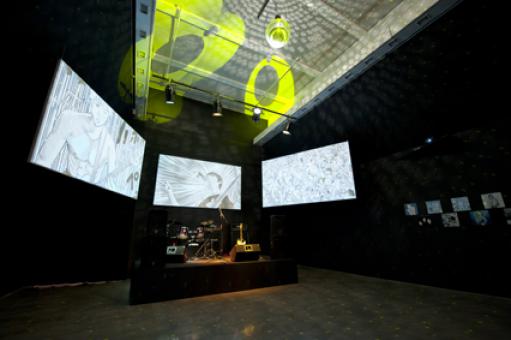
Installation view at Contemporary Art Gallery, Art Tower Mito Photo:Ken Kato
This exhibition puts the spotlight on nine popular manga titles that have emerged since 2000.
The aim is to introduce narrative manga as it stands today – as the culmination of decades of development since the postwar period. Exhibitions of manga generally focus on original drawings by manga authors. In this exhibition, which is produced in close cooperation with authors, editors and others involved in the manga production process, the focus is on creating experiential, three-dimensional presentations of the worlds depicted in manga.
For years, manga artists have freely incorporated elements from other artistic forms, such as film and literature. Manga makes regular use of symbolism, and has developed into a cultural industry encapsulating much more than children's entertainment. Manga have been made on themes as diverse as sports, science fiction, gambling, love, violence and sex. As a cultural industry, manga reached its peak in the 1990s. Since 2000, the diversification of the manga readership has been mirrored by even greater diversification of themes and forms. It has got to the point where it is no longer possible to talk of a single, all-encompassing concept of "manga."
The changes that have occurred since 2000 include the blurring of what used to be clearly delineated gender- and age-specific manga genres; the appearance of manga as straight vehicles for particular characters, often with elements of "moe" (fetishistic appreciation of certain characters); and, the appearance of manga, known as "sekai-kei," in which the main character's personal and internal interests are tied directly with the fate of the world. But perhaps the most important change has been the broadening of manga's acceptance in society as a whole – both in Japan and around the world. That broadening is evidenced by the explosive growth of the dojinshi (self-published manga fanzines) market, the proliferation of television dramas and films based on manga, the referencing of manga in contemporary art, the growth of manga's export market, and – as a result of these developments – the emergence of international academic discourse on manga in such fields as Japanese studies, sociology, aesthetics and art history. To cope with the increased interest in manga, several universities have established new departments aimed giving instruction on its practical and theoretical aspects. For the first time, manga has come to be recognized as one of contemporary Japan's leading forms of culture.
How do manga artists give expression to the mood of the day? How do they use their essentially two-dimensional medium to depict complex relationships in time and space? Taking into consideration all of the changes that have occurred over the last decade, this exhibition gives three-dimensional expression to the challenges facing contemporary manga artists as well as the diverse experiments they devise to surmount them. This is more than an exhibition: it is an experiential space that captures the wonder and the potential of one of Japan's most important forms of expression, manga.
[EXHIBITION TOUR]
After being held at Contemporary Art Center, Art Tower Mito, this exhibition will tour to
Seoul, Korea as follows:
Dates: Saturday, December 4, 2010 –Sunday, February 13, 2011
Venue: Artsonje Center
Enquiries: The Japan Foundation
Outline
Venue
Contemporary Art Gallery, Art Tower Mito
Dates
August 14 (Sat.),2010,to September 26 (Sun.),2010
Closing dates
Mondays (Tuesdays if Monday is a national holiday)
Opening hours
9:30 a.m. - 6:00 p.m. (no admittance after 5:30 p.m.)
Admission
Adult ¥800, Advanced purchase and Group discount(more than 20 people) ¥600, Admission Free: Child aged under 15/Senior Citizen over 65/Disabled pass holder and an attendant each/One year pass holders
Organized by
Mito Arts Foundation, The Japan Foundation
Grants from
Asahi Beer Arts Foundation
Supported by
Asahi Breweries, Ltd., Kodansha Ltd., MUSIC SHOP KAWAMATA, OHTA PUBLISHING COMPANY, Shogakukan Inc., SHUEISHA Inc., YAMAHA CORPORATION, YAMAHA MUSIC TRADING CORPORATION
Curated by
Takahashi Mizuki (Curator, Contemporary Art Center, ATM)
Exhibition design
Toyoshima Hideki (gm projects)
Contact
TEL 029-227-8120
Contemporary Art Center
【Organized by】
Mito Arts Foundation
WORKS AND EXHIBITS
- Inio Asano, Solanin (Shogakukan, 2005-2006)
- Moyoco Anno, Sugar Sugar Rune (Kodansha, 2003-2007)
- Daisuke Igarashi, Children of the Sea (Shogakukan, 2006-)
- Fusako Kuramochi, Five Minutes from the Station (Shueisha, 2007-)
- Machiko Kyo, Sennen Gaho (Ohta Publishing Company, 2008-)
- Taiyou Matsumoto, No. 5 (Shogakukan, 2000-2005)
- Tomoko Ninomiya, Nodame Cantabile (Kodansha, 2001-2010)
- Harold Sakuishi, BECK (Kodansha, 1999-2008)
- Tamiki Wakaki, The World God Only Knows (Shogakukan, 2008-)
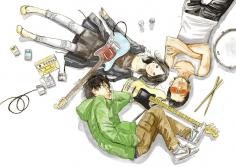
Solanine 2005-2006 © Inio Asano/Shogakukan
Inio Asano
Solanin (Shogakukan, 2005-2006)
Installation including landscape photographs by the author as well as images from Solanin edited into a video presentation.
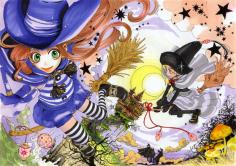
SUGAR SUGAR RUNE 2003-2007© MOYOCO ANNO/KODANSHA
Moyoco Anno
Sugar Sugar Rune (Kodansha, 2003-2007)
Spatial installation using three-dimensional collages as well as exhibition of prints.
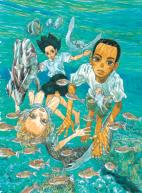
Children of the Sea 2006- © Daisuke Igarashi/Shogakukan
Igarashi Daisuke
Children of the Sea (Shogakukan, 2006-)
Installation depicting the manga's undersea world as well as an exhibition of original drawings.
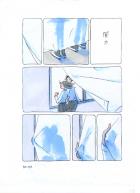
SENNEN GAHOU 2004- © MACHIKO KYO
Machiko Kyo
Sennen Gaho (Ohta Publishing Company, 2008-)
Original drawings exhibited within a spatial installation depicting the world of sen-nen-gahou.
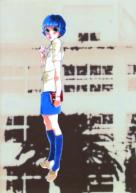
5 minutes from the station 2007- © FUSAKO KURAMOCHI/SHUEISHA
Kuramochi Fusako
Five Minutes from the Station
(Shueisha, 2007-2010)
Labyrinth-like, three-dimensional presentation of the work's complicated time and spatial structure.
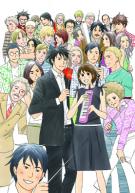
Nodame Cantabile 2001-© TOMOKO NINOMIYA/KODANSHA
Tomoko Ninomiya
Nodame Cantabile (Kodansha, 2001-2010)
Exhibition of original drafts and color illustrations as well as the classical music that features in the work.
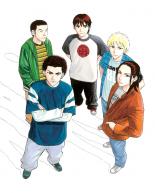
BECK 1999-2008© Harold Sakuishi/KODANSHA
Harold Sakuishi
BECK (Kodansha, 1999-2008)
Scenes from the manga in which BECK performs are shown, without sound, in a space made to look like a live rock venue.
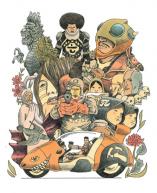
NO.5 2000-2005© Taiyou Matsumoto/Shogakukan
Taiyou Matsumoto
No. 5 (Shogakukan, 2000-2005)
Exhibition of original drawings as well as an installation using large illustrations.
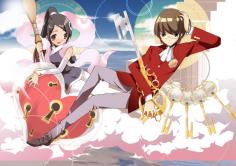
The World God Only Knows 2008- © Tamiki Wakaki/Shogakukan
Wakaki Tamiki
The World God Only Knows (Shogakukan, 2008-)
Installation exploring the author's concerns that feed into his depiction of the manga's world and characters.
Related program
